About Chinese Type Design - 1/3
- Category
- Article
- Year
- 2023
Introduction
While there is a growing interest among non-Chinese designers for Chinese typography, many have struggled to find information about it in both virtual and analog worlds, and in English. This has given the impression that a thick veil of mystery surrounds these complex-looking characters.
This is the first part of a set of three articles. Each part may help you get a clearer understanding of what it is to know in order to plan for a Chinese typeface project (or just out of curiosity, that works too). They will hopefully give you a better insight and (broad) answers to questions like:
- custom or not, how much does a Chinese typeface costs?
- how long does that take?
- why such crazy numbers???
Short History and Context
Knowledge is essential for good design. That’s why we start here with the origins and history of Chinese characters, tracing their evolution to contemporary times and understanding how the writing system works, as this is necessary to appreciate the significant influence it has on the design process.
Chinese characters, what are they?
For those who are not familiar with Chinese: Chinese characters are ideographic characters. Which, simply put, means that each character has its own form, meaning and monosyllabic pronunciation.

For more complex meanings, a large part of Chinese characters is a combination of others following a specific structure: compound ideographs. They can give hints on either the pronunciation or the meaning of the character, or sometimes both (see image 1). Multiple independent characters can also be grouped together for even more complex or specific concepts (image 2).

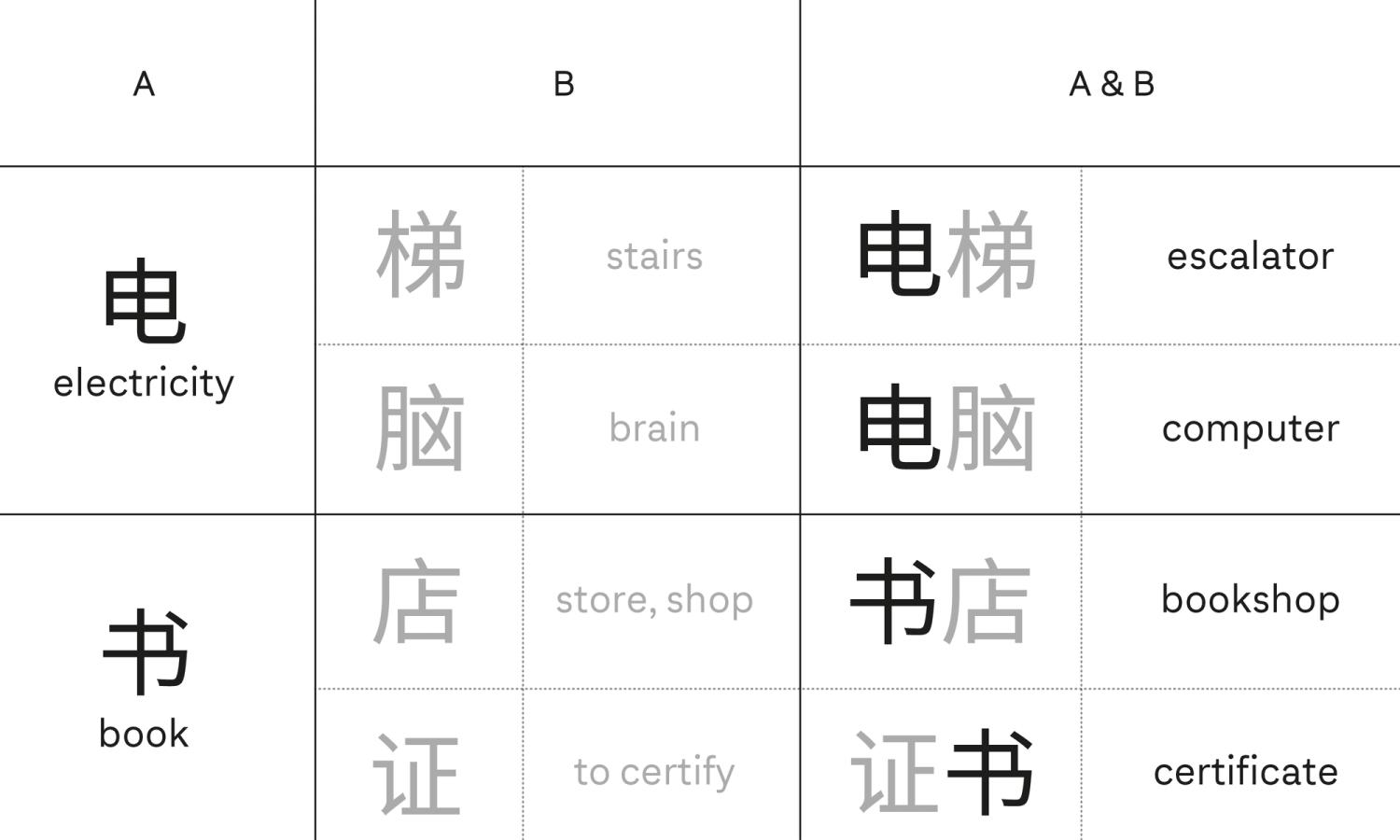
Chinese characters find their origins in an ancient script called Oracle Bone script that appeared around 2000 B.C. in center China (contemporaneous with Egyptian hieroglyphs and Cuneiform). They started with straightforward and useful concepts, such as elements in nature or objects like “crops”, “water” or “house”, carved on tortoise shells or bones for divination purposes. The characters that we use today evolved from these and still carry close similarities to most of them.
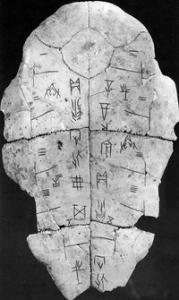
Chinese characters that we use today
People in ancient China used characters not only for divination but also for recording administrative information and other daily usages, transcribing the many languages spoken in the vast area of today’s China. Standardization of the Chinese language, including its currency, writing, and measuring systems, mainly occurred during the reign of Emperor Qin Shi Huang of the Qin Dynasty (2nd century B.C).
As the Chinese language kept evolving with more words being created, characters followed and kept being created as well. But no matter the many writing styles of each era, how the writing system visually works has never changed much. Despite the numerous changes in frontiers and dynasties, there was no fundamental modification all the way until modern times. Contemporary Chinese can still read and understand most texts written in bamboo stripes, carved in stone, or cast in iron thousands of years ago!
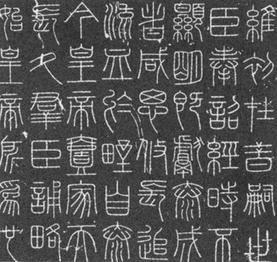
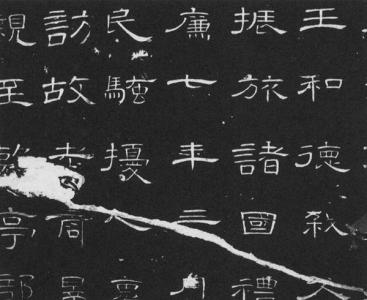
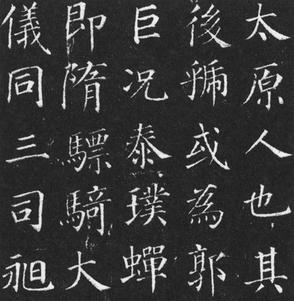
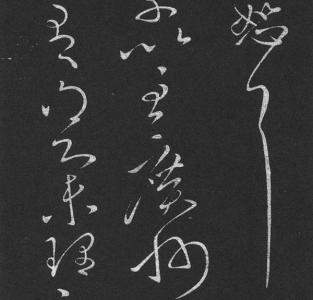
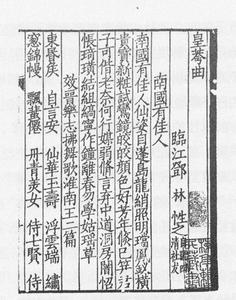
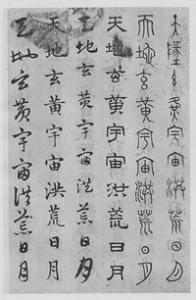
That being said, the system is designed in such a way that the total number of characters keeps building up. Today, there are approximately 100,000 characters 1, although it is difficult to determine the exact number of characters in the Chinese language, just as it is difficult to determine the number of words that exist in any language, including those from its past.
With the long life of the Chinese language, some old words and their related characters aren’t used anymore but still exist in historical texts as rare characters. It is similar to Latin (language), Old Norse, or Ancient Greek which are not used as modern languages but are still used for specific situations, like scientific documents or archeological findings. Some Chinese family or location names are also rare or uncommon, not known by people who are not concerned with them. Just like how an English speaker couldn’t know every single word that exists in English.

That many?!
Relax. No one knows or needs to know all of the 100,000 Chinese characters. That is humanly impossible. Think of whether an English speaker, even the greatest expert in the English language, would be able to know every single word that exists that language, including those from Old English... Is that possible? Is that even of any use?
On a daily basis, knowing about 3,000 to 4,000 Chinese characters is already more than enough to navigate through everything in life 2. When someone meets an unknown character (which happens every once in a while), the person can guess its meaning based on the context and every other character around it. A large portion of Chinese characters gives hints on either their pronunciation or meaning (remember the compound ideographs?). However, this is not systematic, exceptions are many, but people find their way around.
Even dictionaries or digital encodings for fonts don’t contain all of them, they are lists of characters selected by governments to be used as standards, that evolve every once in a while depending on the usage.

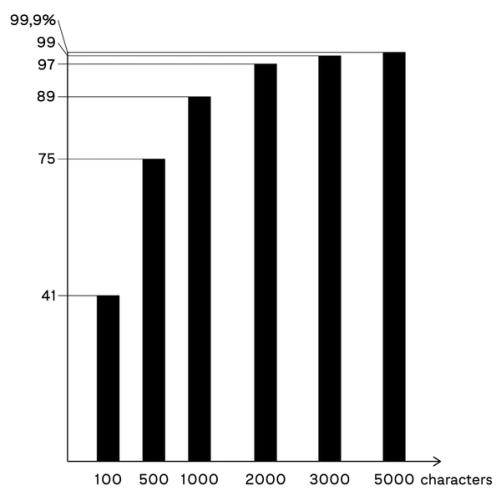
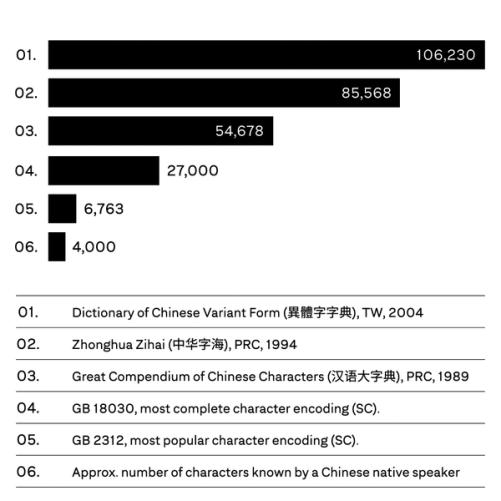
What are they to Chinese people?
Type designers have a very particular relationship with the shapes that create a visual existence in their language(s), for sure. But, for people speaking languages using the Latin alphabet, letters are sort of symbols to combine in order to transcribe the sounds of their language and many others.
Spirited characters
Many Chinese characters are used as lucky charms, carrying a power of their own, the power of their meaning. You may have seen all kinds of decorations with characters like 福 [fú] for “good fortune” on homes‘ front doors, or 喜 [xǐ] “happiness” at wedding parties,… Or red paper strips on front doors or calligraphy scrolls in interiors, with good wishes for the first ones and poetry on the second ones. The list is endless, but one thing is always in common: great execution of the characters. No matter which material or technique is used, great-looking characters are very appreciated, and by everyone. Any craft involving Chinese characters—from calligraphy to stamp seal carving, and the unfortunately-rare-nowadays shop sign painting—are very highly respected expertise. Think of how often you see Chinese calligraphy on a wall of a Chinese restaurant, living room, allows office or lobby,...
Chinese characters also have a certain fluidity given by their organic nature that allow them to be recognizable even with significant transformations. Many decorative patterns are derived from specific characters, used both for the meaning that they carry and their decorative aspect. All in all, Chinese characters are appreciated by anyone using them, not type designers only…

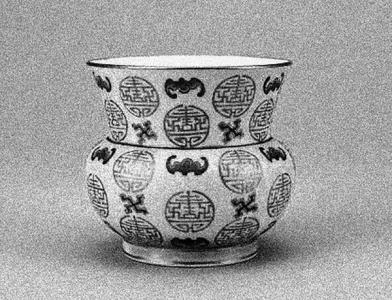
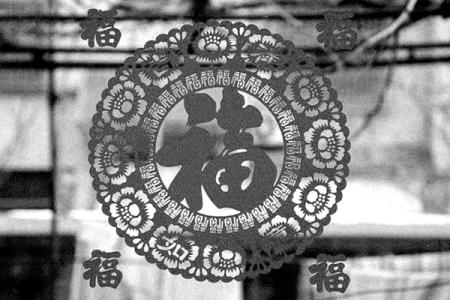
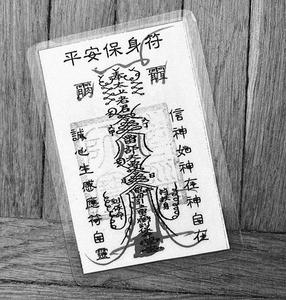
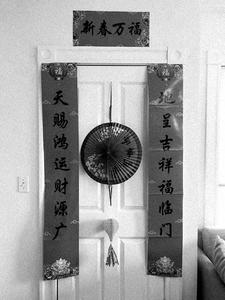
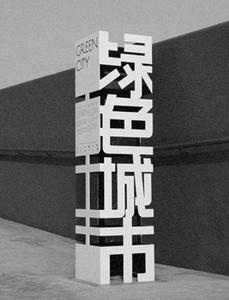
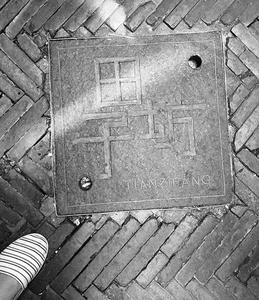
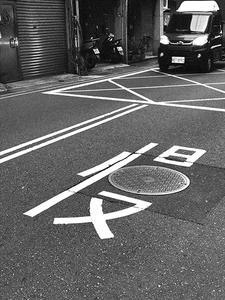
A script for a language
Chinese characters, like some other scripts like Greek or Hebrew, are used for one single language only: Chinese. The other name for Chinese characters is Hanzi, for 汉字 [hànzì], meaning “characters of the Han (people)”. They were borrowed to be used in other languages that had historical connections with China, such as Japanese, Korean or Vietnamese 3. Since Korean King Sejong the Great created Hangul script to better match the Korean language, and Vietnam used the Latin alphabet instead of Chinese characters, Japanese is the only other language still using Chinese characters (called Kanji), together with two other scripts: Hiragana and Katakana. Kanjis evolved independently from Hanzi for several centuries, which gave subtle but substantial differences to Hanzi, sometimes enough for one to identify if it is a Japanese or Chinese character.
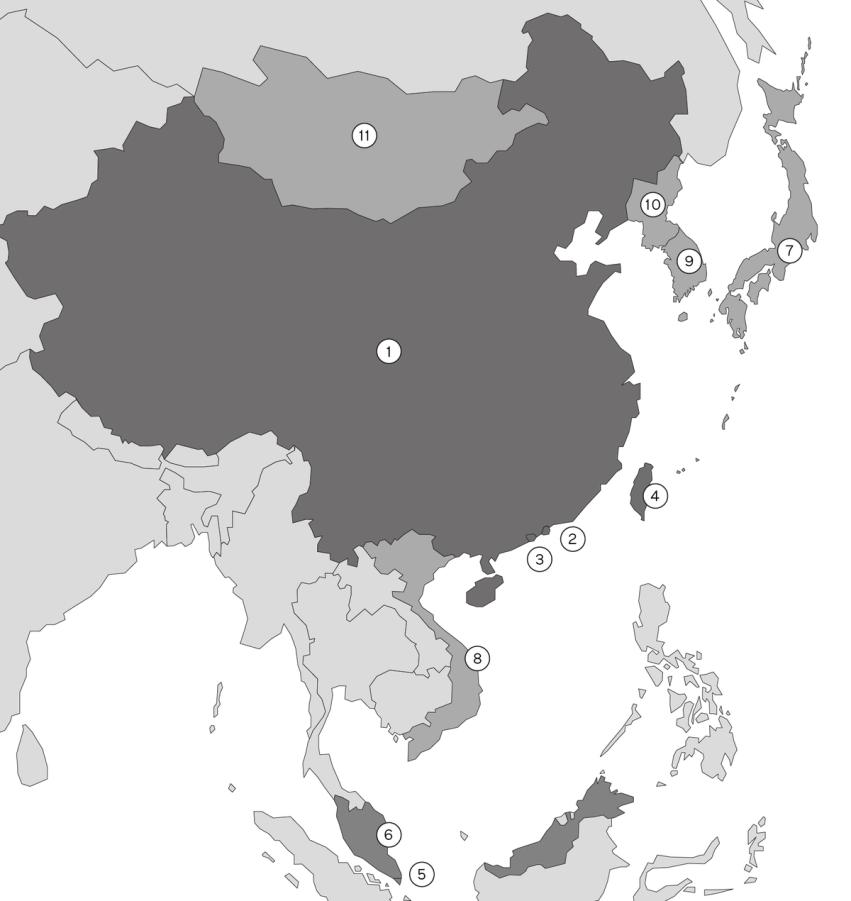
Traditional and Simplified Chinese, why is that?
Today, they are two variations of the same characters: Traditional and Simplified Chinese characters. They are both used for the Chinese language, but it is important to identify which is what, and why there are two variations.
A Traditional character and its Simplified form are pronounced the same and have the same meaning. They are different only in their visual form. The original form of Chinese characters is the Traditional version.
Simplified Chinese characters appeared quite recently. They began to be taught in schools around the 1950s and are the results of decades of experimentation and reforms made by the Communist Party in today’s Mainland China to reduce illiteracy. Most people couldn’t read or write Hanzi due to their complexity to learn, making them accessible only to a privileged few. So most characters have been redesigned to look similar to the Traditional ones but with fewer strokes, hence the name Simplified 4.

Writing system and politics
Territories where Chinese is also spoken like Hong Kong and Taiwan decided to keep the Traditional forms as a way to be politically (and culturally) independent from Mainland China.
Nowadays, since each population has developed its own culture, Traditional characters have also evolved with subtle and specific variations, just like Kanjis in Japanese. These variations are sometimes so subtle that it is hard to identify which is used by whom for people who are unfamiliar, but they are important enough for the users as familiarity creates a certain preference and cultural identity.
Identifying the “nationality” of Chinese characters is even more important since Mainland China claimed with growing force its governance over Hong Kong and Taiwan. So, if you send a text translated into Chinese to a Hongkongese recipient, do make sure that it is set in Traditional Chinese instead of Simplified.

Conclusion
A writing system cannot be removed from even part of its cultural background and historical context, or be considered as mere signs. For Hanzi, this is definitely a concept to keep in mind. For someone or some company considering designing a Chinese typeface, knowing (at least) what has been depicted above is only the basis. Another (very much advised) option would be to rely on and trust a native speaker and typeface designer, as a lot more has to be considered along the way.
A typeface with a writing system with 5,000 years of history can’t possibly be managed that easily, and that’s what makes it so interesting.
In the next article, we will go through Chinese characters in the modern and digital world, with technical aspects specific to Chinese typeface design and production.
Links
- 100 Most common Chinese characters, Chinese Language Institute.
- 3500 Most essential characters in Table of General Standard Chinese Characters,《通用规范汉字表》
Related Articles
- About Chinese Type Design - 2/3
- About Chinese Type Design - 3/3 (coming soon)